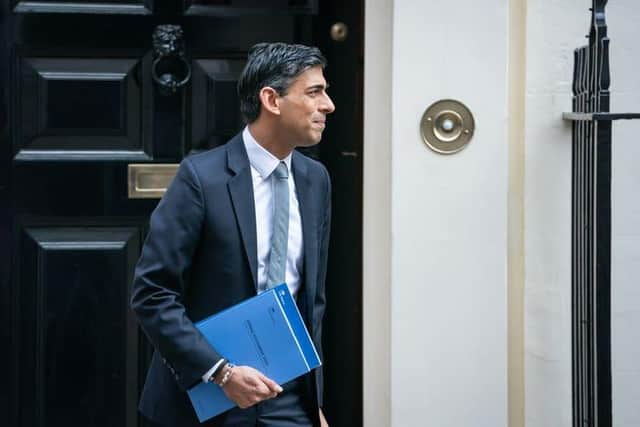What the National Insurance change means for average Doncaster worker
and live on Freeview channel 276
Nearly 30 million UK workers will see their taxes cut following Chancellor Rishi Sunak's raising of the NI earnings threshold, though a think tank said over one million Britons will be on the verge of "absolute poverty" due to the rising cost of living.
Figures from the Office for National Statistics show that the median salary for full-time workers living in Doncaster was £28,761 in 2021.
Advertisement
Hide AdAdvertisement
Hide AdCurrently, employees pay National Insurance on 12 per cent of their annual earnings over £9,568, meaning a worker on this wage would pay £2,303 – around £192 per month.


It was previously announced that NI rates will rise to 13.25 per cent for one year from April 6 – to raise funds which will be ring-fenced for health and social care.
This means the average full-time Doncaster worker will pay £20 more for a few months.
But in his spring statement, Mr Sunak announced that the earnings threshold will rise to £12,570 from July to mitigate the increasing cost of living, meaning a Doncaster worker earning the media salary for the area will pay £158 less per year than they do now – £2,145.
Advertisement
Hide AdAdvertisement
Hide AdThis is compared to £2,179 across Yorkshire and the Humber as a whole, where the median salary for full-time employees is £29,022.
Mr Sunak said it was “a £6 billion cut in personal tax cut for 30 million people across the United Kingdom, a tax cut for employees worth over £330 a year”.
The Chancellor added that around 70 per cent of workers would have their tax cut by more than the increase coming in April.
Further measures unveiled include a 5p cut in fuel duty and a pledge to cut the basic rate of income tax from 20p in the pound to 19p in 2024.
Advertisement
Hide AdAdvertisement
Hide AdHowever, the Resolution Foundation said the “big but poorly targeted policy package” does not do enough to aid the families who have been hit the hardest by the cost-of-living crisis.
It estimates that 1.3 million Britons are set to fall below the poverty line next year, including 500,000 children – the first time Britain has seen such a rise outside of a recession.
It also determined that only one-in-eight workers will actually see their tax bills fall by the end of the parliament.
Resolution Foundation chief executive Torsten Bell said: “Rishi Sunak has prioritised rebuilding his tax-cutting credentials over supporting the low-to-middle-income households who will be hardest hit from the surging cost of living, while also leaving himself fiscal flexibility in the years ahead.
Advertisement
Hide AdAdvertisement
Hide Ad“Whether that will be sustainable in the face of huge income falls to come remains to be seen.”
Asked about this report, Mr Sunak told Beth Rigby Interviews that over the last ten years, the number of people living in poverty has declined by about 1.3 million people.
As part of a raft of measures introduced in his spring statement, Mr Sunak also announced that the Household Support Fund will rise to £1 billion from April “to do more to help our most vulnerable households with rising costs”.
In October, £421m was distributed to allow councils to help vulnerable households with essentials over the winter – Doncaster receiving £2,989,273 of this.
In these confusing and worrying times, local journalism is more vital than ever. Thanks to everyone who helps us ask the questions that matter by taking out a subscription or buying a paper. We stand together. Nancy Fielder, editor.
Comment Guidelines
National World encourages reader discussion on our stories. User feedback, insights and back-and-forth exchanges add a rich layer of context to reporting. Please review our Community Guidelines before commenting.
